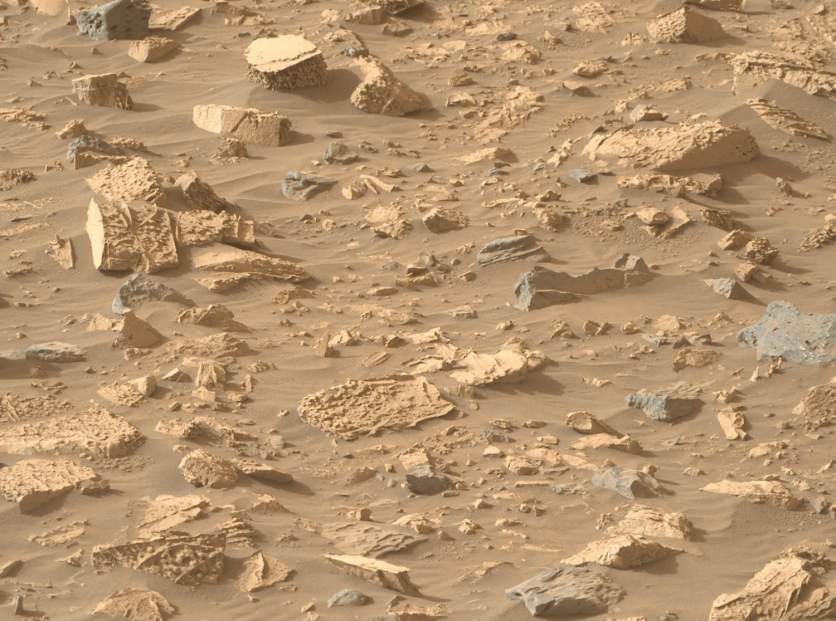NASA's Perseverance rover has reached Mars' "Bright Angel" and found a unique formation of rocks that resemble popcorn.
NASA Perseverance Finds Popcorn on Mars
Upon arrival at the Bright Angel site, the Perseverance rover's team observed oddly textured rocks, prompting further investigation. Before moving northward, Perseverance had completed a survey of diverse boulders at "Mount Washburn."
The rover paused at a layered, light-toned rock exposure to capture detailed images. This preliminary stop set the stage for a more comprehensive exploration of the larger outcrop nearby.
On sol 1175 of its mission, Perseverance reached the base of the Bright Angel outcrop. The science team was captivated by the rocks' strange textures, which featured sharp ridges resembling mineral veins found elsewhere on Mars.
Some rocks were densely packed with small spheres, leading the team to humorously describe the texture as resembling popcorn. These features suggest that groundwater likely flowed through these rocks after their formation.
In the coming days, NASA said that Perseverance will ascend the rock exposure, conducting detailed measurements and utilizing its abrasion tool to examine the rocks up close.
The rover's instruments will provide chemical data that will help the team decide whether to collect samples. Following this exploration, the rover is slated to return south across Neretva Vallis to investigate another site named "Serpentine Rapids."
Read Also : NASA's Perseverance Marks 1,000th Day on Mars, Robotic Rover Unravels Ancient History of Martian Lake

An 'Angel' on Mars
During its mission, Perseverance captured a "heavenly" image of the Bright Angel geological feature while exploring the ancient river channel, Neretva Vallis. The rover's navigation cameras documented this view on June 6, marking the 1,172nd sol of the mission.
The rover's journey to Bright Angel involved navigating through a dune field to avoid boulders and expedite its path. This strategic detour not only saved time but also allowed scientists to study fascinating geological formations within the ancient river channel.
NASA said that Bright Angel's light-toned outcrops may hold clues to Mars' history, possibly consisting of ancient sediment deposited during the river's active phase or older rock layers revealed through erosion.
This region is crucial for the rover's current fourth science campaign, which aims to identify carbonate and olivine deposits within the "Margin Unit" along the rim of Jezero Crater. The team meticulously plans each move to navigate the challenging terrain, guiding the rover in increments of about 100 feet per Martian sol.
While Perseverance uses its AutoNav system to maximize ground coverage efficiently, the rocky landscape often requires careful manual supervision to ensure safe passage, according to NASA. Read more about this Martian "angel" here.
Related Article : NASA Tests Future Mars Helicopter Designs on Earth and Red Planet, Getting the 'Best of Both Worlds'

ⓒ 2026 TECHTIMES.com All rights reserved. Do not reproduce without permission.




